REPORTEROS
Une méthode d’apprentissage de l’espagnol inclusive et communicative en quatre niveaux, qui s'adresse aux jeunes étudiants d'aujourd'hui !




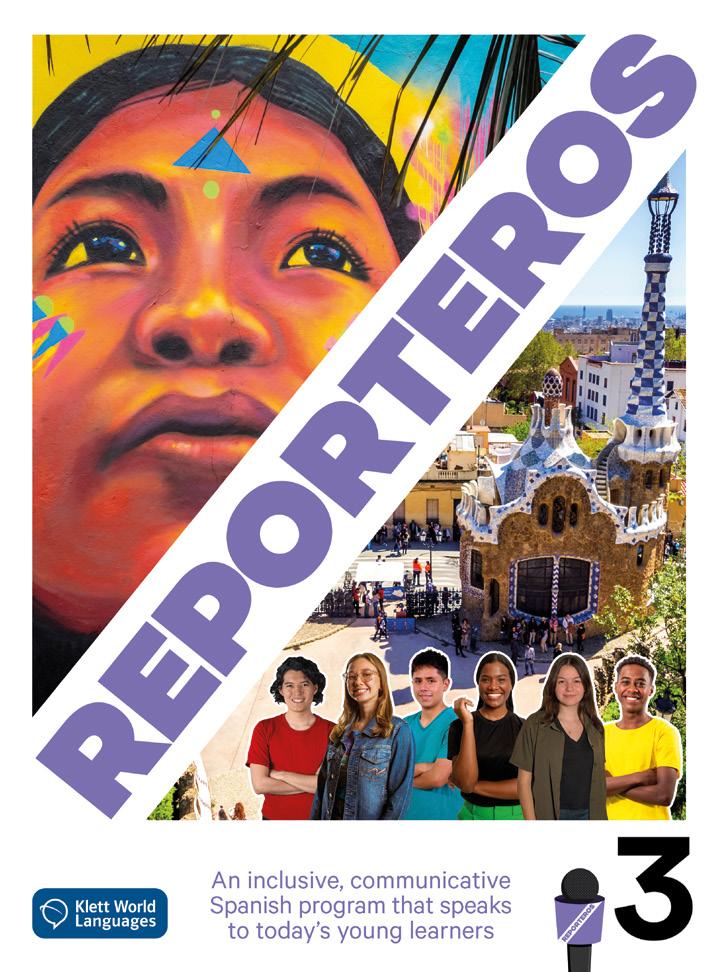
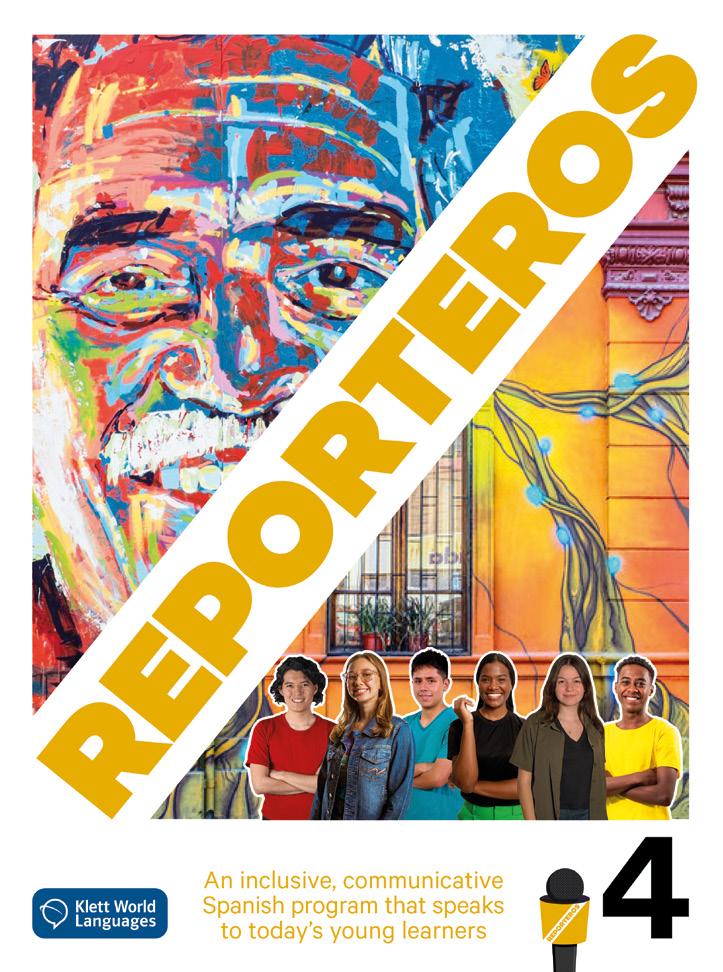
REPORTEROS est une méthode d’apprentissage de l’espagnol inclusive, innovante et qui s'adresse aux jeunes étudiants d'aujourd'hui. Celle-ci adopte une approche d’apprentissage communicative et basée sur les tâches à travers des projets inspirés de scénarios du monde réel. La méthode propose un contenu authentique et captivant qui éveille la curiosité des élèves sur le monde hispanophone.

Pourquoi REPORTEROS
REPORTEROS mène les étudiants du niveau A1 au niveau B1.2 selon le CECRL .
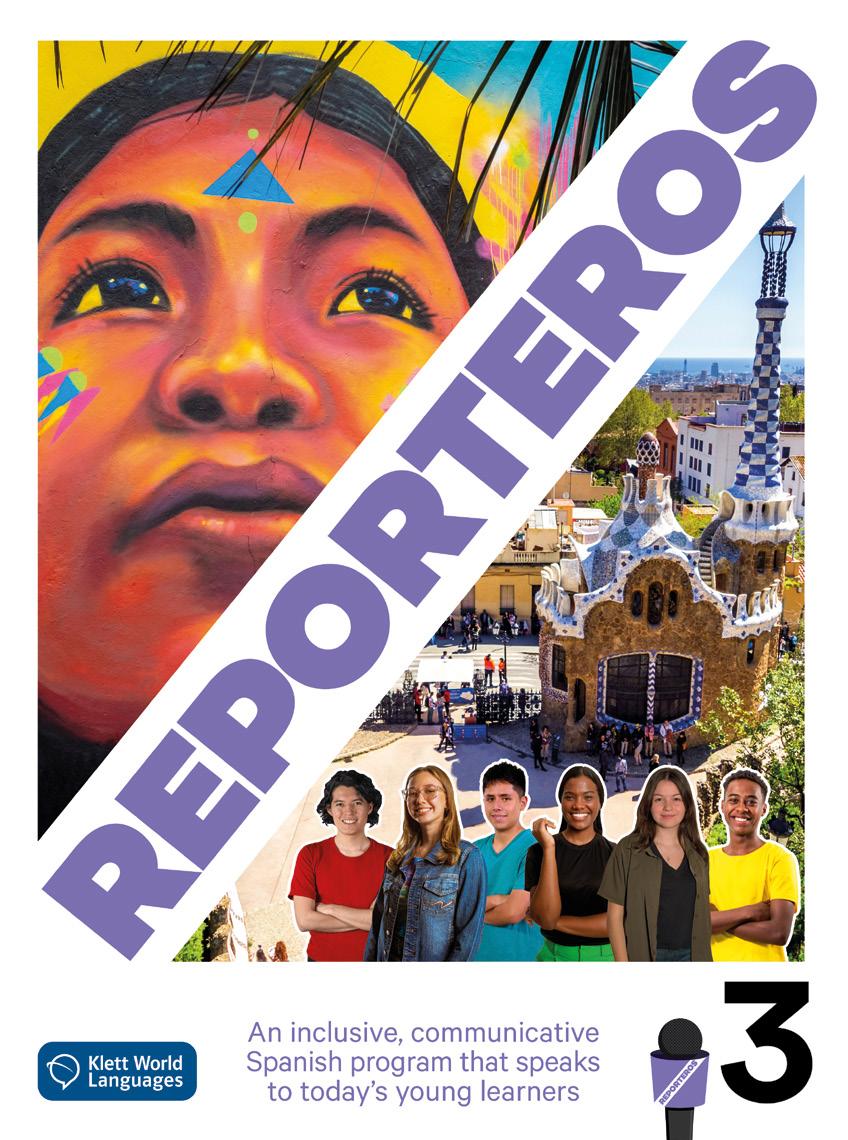





INTRODUCTION DE L'UNITÉ
Questions essentielles
Deux questions (une par leçon) qui guident les étudiants tout au long de l'unité en mettant en perspective les principaux sujets des deux leçons. Ces questions sont ancrées dans le cœur des leçons et développent les compétences de réflexion critique
Les vidéos du reporteros
Chaque unité est construite autour d'un ou d'une reportero/a, un adolescent d'un pays hispanophone. Dans la vidéo, les reporteros se présentent, présentent leur pays et les principaux sujets de l'unité.
Miniproyectos et Proyecto final
Les deux Miniproyectos (un par leçon) et le Proyecto final (un par unité) sont des projets du monde réel dans lesquels les étudiants utiliseront la grammaire, le vocabulaire et les compétences de communication qu'ils ont appris dans chaque leçon.


INTRODUCTION DE LA LEÇON Cultura
Objectifs de la leçon
Un résumé visuel des objectifs de la leçon : la première colonne présente les objectifs de communication, la deuxième présente le vocabulaire et les structures grammaticales, et la troisième montre les aspects culturels de la leçon.
Ressource authentique
Un choix diversifié d'images authentiques (photos de monuments célèbres, personnalités influentes du patrimoine hispanique, campagnes de sensibilisation, etc.) qui constitue la base principale des activités Para empezar qui suivent.


Un court texte sur un élément culturel spécifique.

Unité en un coup d’œil 74 setenta y cuatro setenta y cinco 75 Reporteros 1 UNIDAD 2 Amigos y familiares ESSENTIAL QUESTIONS What makes people who they are? What makes a family? PROYECTO FINAL Participate in a special edition of the school magazine. LECCIÓN 1 Somos así Miniproyecto 1 Create your profile for an online platform. LECCIÓN 2 Mi gente Miniproyecto 2 Introduce the important people in your life. Watch the video. Answer the questions. 1. ¿Cuántos años tiene Sebastián? 2. ¿De dónde es? 3. ¿Qué idiomas habla? 4. ¿Cuáles son sus platos favoritos? 5. ¿Cuál es su deporte favorito? 6. ¿Qué cantantes de origen puertorriqueño menciona? 1 We travel to Puerto Rico to talk about friends, family, and pets. Capital: San Juan Ciudades importantes: Ponce, Mayagüez Población: 3,1 millones de habitantes Idiomas: español, inglés Comida típica: arroz con gandules, tostones... Datos curiosos: • Es un estado libre asociado a los Estados Unidos. • Los puertorriqueños son ciudadanos de los Estados Unidos desde 1917. • La industria principal del país es el turismo. El Yunque es el parque natural más importante. Reporteros 1 ¿Cómo están? Soy Sebastián y soy puertorriqueño. PUERTO RICO Fuente: Portal Oficial del Gobierno de Puerto Rico San Juan Para empezar Reporteros 1 LECCIÓN 1 Somos así IN THIS LESSON, YOU WILL… • express likes and dislikes talk about music preferences • describe people, animals, and pets: their characteristics and their personalities express agreement and disagreement BY USING... • gustar a mí también / tampoco noun-adjective agreement • muy mucho un poco • vocabulary for activities, music, pets, and personality traits AND YOU WILL FIND OUT ABOUT… • the origins of the word boricua sports and music in Puerto Rico • animals of Puerto Rico La Borinqueña, a Puerto Rican superhero the Taino culture MINIPROYECTO 1: Create your profile for an online platform. LEE Y HABLA A. Look at the poster about un concierto What did you find out about the concert? La cantante se llama... El concierto es el día... B Read the chat. Answer the questions below. 2 1. ¿Quién va al concierto de VF7? 2. ¿Dónde es el concierto? 3. ¿Cuál es el estilo musical de VF7? 4. ¿De dónde es VF7? C. ¿Qué cantantes y bandas latinos/as son famosos/as en tu país? Sora TV Inc. & Sora and Company setenta y siete 77 Boricua significa “puertorriqueño/a”. Viene de (It comes from) Borinquén el nombre de Puerto Rico antes de la llegada (before the arrival) de los españoles. Borinquén es un nombre taíno; los taínos son los habitantes nativos de la isla. COMPARACIÓN CULTURAL Name groups of native peoples in your country. CULTURA Sebastián ¡Hola! ¡Muy bien! Tengo un boleto para el concierto de VF7. Es el 19 de junio en San Juan. ¡Es un concierto virtual! Dana ¡Hola! ¿Qué tal? ¿Están bien? Dana ¿VF7? Dana Ah, puertorriqueña, ¿como Bad Bunny y Daddy Yankee? Sebastián Sí, su nombre artístico es VF7. Su nombre real es Valeria Fernández. Es una cantante boricua de reguetón. Sebastián Sí, muchos cantantes de reguetón y de salsa son de Puerto Rico. 1 ticket 5:12 5:18 5:19 5:20 5:22 5:25
También se dice… Variations linguistiques du lieu présenté dans l'unité. Les mots sont soigneusement sélectionnés. Seuls les termes les plus couramment utilisés sont présentés.
Approche étape par étape
Toutes les vidéos et certains des textes offrent une approche “étape par étape” pour aider les élèves à comprendre, interpréter et analyser ce qu'ils voient ou lisent.
Reto
Une activité plus difficile.
Focus sur les structures
Activités où les élèves sont invités à réfléchir aux structures grammaticales.

Mi gramática
Présentations concises et exemples des structures grammaticales de cette section, accompagnés d'une référence à la page où une explication plus détaillée est donnée.









Mi vocabulario
Une liste de mots et d'expressions qui représentent l'objectif d'apprentissage de cette section, avec une référence à la présentation visuelle du vocabulaire. La voyelle accentuée est toujours en gras.



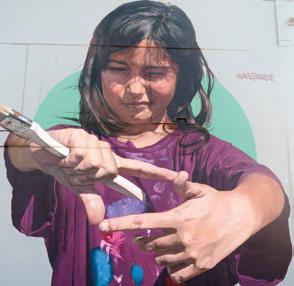


LECCIÓN 2 Workbook pp. 84-86 Arte en Puerto Rico I can describe someone’s physical appearance. 102 ciento dos ciento tres 103 MIRA, HABLA Y ESCRIBE A. Sebastián is visiting a street art event in Loíza. Deduce the meaning of the following words. 8 Mira el video LEE, HABLA Y ESCRIBE A. Read the information about three Puerto Rican murals. In pairs, match the descriptions to the correct murals. B. Write a description for the fourth mural. ¿Cómo es la persona? 9 Reporteros Reporteros 1 David Zayas Luis Alejandro Rodríguez Danilo Lozada y Diego Rodríguez � E-WORKBOOK � HERITAGE � DIFFERENTIATION En Puerto Rico el arte callejero (street art) es muy importante. Existen festivales prestigiosos como «Humacao Grita», en la costa este de Puerto Rico, «Santurce Es Ley», en San Juan, y «Yaucromatic», en Yauco. COMPARACIÓN CULTURAL Is street art considered an art in your country? Is it similar to the street art in Puerto Rico? CULTURA B. Answer the questions. 1. ¿Cómo es el mural? 2. ¿Cómo es la muchacha físicamente? 3. ¿Qué es Los Cocoteros? C. Look for another Puerto Rican mural. Describe it. ¿Cómo es la persona físicamente? RETO Después de ver el video Luis Alejandro Rodríguez, La Cocotera Proyecto Monument Art Tiene el pelo largo y negro. Tiene los ojos negros y la nariz grande. Lleva barba. Tiene el pelo largo, castaño y liso. Tiene las manos grandes. Tiene el pelo corto y blanco. Tiene los ojos negros. Lleva lentes y bigote. 1 2 3 A C D B los ojos la cabeza la mano el pelo LAS PARTES DEL CUERPO parts of the body la boca mouth la cabeza head la cara face las manos hands la nar z nose las orejas ears LA DESCRIPCIÓN FÍSICA (1) Tiene los jos... eyes les gros rdes Tiene el pelo... hair castaño negro rubio bl corto argo so rizado Es... pelirrojo/a Lleva… barba beard bigote moustache entes glasses VOCABULARIO pp. 111-112 MI VOCABULARIO LECCIÓN 1 Workbook pp. 66-68 Mi animal favorito I can describe characteristics and personality traits of animals and pets. 82 ı ochenta y dos ochenta y tres 83 LEE, HABLA Y ESCRIBE A. Read the opinions about animals written by two of our reporteros Do you agree with them? ¿Cuál es tu opinión? Yo creo que las tortugas (no) son… 13 B. Read the sentences below. In pairs, discuss why bonito/s and bonita/s have different endings. C. Write about an animal that you like and one that you don’t like. Explain why. Me gustan los perros porque son… JUEGO: EL JUEGO DEL MIMO 1. In groups, a student uses actions to describe one of the adjectives: divertido/a distante 2. The other students guess which adjective is being mimed. � 1. El gato es bonito. 3. Los gatos son bonitos. 2. La tortuga es bonita. 4. Las tortugas son bonitas. 14 INTERACTÚA Y ESCRIBE A. Look at the picture. ¿Qué mascotas te gustan? Discuss in small groups. A mí me gustan las cobayas. ¿Y a ustedes? 11 B. Let’s find out la mascota favorita de la clase 1. Two students ask the class: ¿A quién le gustan los perros? ¿A quién le gustan los gatos? etc. 2. Two other students keep track of the answers on the board. 3. ¿Cuál (what) es la mascota favorita de la clase? La mascota favorita es el / la… LA PERSONALIDAD (1) cariñoso cariñosa ≠ distante loving ≠ distant dependi nte ≠ independi nte d vert do divertida ≠ aburrido aburrida fun ≠ boring inteligente smart tranqu lo tranqu la ≠ nervioso nerviosa quiet ≠ nervous LAS CARACTERÍSTICAS ágil bon to bon ta ≠ feo / ea nice ≠ ugly grande ≠ pequeño / pequ ña big ≠ small rápido rápida ento enta fast ≠ slow VOCABULARIO p. 94 MI VOCABULARIO LOS ANIMALES DE PUERTO RICO Los animales más representativos de Puerto Rico son el manatí, un mamífero marino que vive en las costas del Caribe y también del Golfo de México, y el coquí, una rana que solo2 existe en Puerto Rico. 1 frog 2 only LEE Y HABLA A. ¿Dónde vive el manatí? ¿Qué es el coquí? B. Research information about an animal that only exists in your country. ¿Cómo se llama? ¿Dónde vive? 12 CONEXIÓN: CIENCIA Manatí de Puerto Rico Coquí de Puerto Rico NOUN-ADJECTIVE AGREEMENT El perr es bonit La tortuga es bonita El gat es inteligent La gata es inteligente Los perr bonit Las tortugas son bonitas Los gatos son inteligentes Las gatas son inteligentes QUANTIFIERS (2): MUY, UN POCO Son muy inteligentes. They are very intelligent. Son un poco feas. They are a little ugly. GRAMÁTICA pp. 89-90 MI GRAMÁTICA la cobaya el pájaro el gato el perro el lagarto el pez el conejo la tortuga Reporteros Reporteros 1 En Puerto Rico el gü mo = la cobaya TAMBIÉN SE DICE… � E-WORKBOOK � HERITAGE � DIFFERENTIATION TU ANIMAL FAVORITO Mi animal favorito es la tortuga. En mi familia tenemos dos. Me gustan porque son tranquilas y muy bonitas. Son un poco lentas, ¡pero yo también! UN ANIMAL QUE NO TE GUSTA No me gustan los caballos porque son nerviosos y muy grandes. TU ANIMAL FAVORITO Me gustan mucho los gatos porque son independientes y divertidos. La gente dice que son distantes, pero yo creo2 que son muy cariñosos. UN ANIMAL QUE NO TE GUSTA No me gustan los lagartos. Son feos y un poco aburridos. Y no son cariñosos. people say that 2 think ANDRÉS, PERÚ GUADA, MÉXICO
Unité en un coup d’œil
Un article de magazine rédigé par l'un des reporteros. Chaque article comprend un court texte adapté au niveau de lecture des élèves. Les articles portent sur des sujets culturels adaptés au pays de chaque reportero/a SOMOS REPORTEROS
Somos reporteros





Watch

taínos, europeos y africanos.
Los puertorriqueños están muy orgullosos4 de su diversidad.
4 (they) are very proud
MI GRAMÁTICA
Présentation de la grammaire Explications visuelles, codées par couleur avec des schémas, des structures, des exemples et des illustrations pour aider les élèves à intégrer les structures grammaticales de la leçon.
un hermano.

Es su hermano. He is his brother. b. Carolina tiene un hermano. c. Yo tengo una prima.
d. Yo tengo cinco primos. e. Sergio y Antonio tienen un perro.
Read the information about
f. Susana y Natalia tienen un perro.
g. Mi esposa y yo tenemos una mascota.
h. Mi esposa y yo tenemos un gato.
i. Mis papás tienen dos pájaros.









I can understand a short article about the native inhabitants of Puerto Rico. Read the text. Answer the questions. 1. Who are the native people of the Caribbean islands? 2. What aspects of the Puerto Rican culture come from origen taíno? 17 LOS HABITANTES DEL CARIBE por Sebastián Martínez reportero de Puerto Rico ochenta y siete 87 86 ochenta y seis CONEXIÓN: HISTORIA ¡ERES REPORTERO/A! 1. Write a brief article about the origins of an element of your culture: a dish, a word, a tradition... 2. Look for some pictures to illustrate it. Translate into English all the words of taíno origin in the article. Did you need a dictionary? Why (not)? Do you think taíno culture has influenced your culture too? In what way? Why do you think Puerto Ricans are proud of their roots? 18 COGS 19 COGS Reconstrucción de un pueblo taíno SOMOS REPORTEROS ESTRATEGIAS Keep it simple Write short sentences and use the texts in this unit as a guide for your writing. LOS TAÍNOS EN EL PRESENTE La influencia de los taínos en la cultura de Puerto Rico es muy importante. BORICUAS Los taínos llaman Boriquén a la isla de Puerto Rico. Hoy, los puertorriqueños se llaman también boricuas LA COMIDA La yuca, la batata, la piña y la papaya son de origen taíno. LAS TRADICIONES Los famosos vejigantes, máscaras de carnaval típicas de Puerto Rico, son de origen taíno también. EL IDIOMA El español tiene muchas palabras taínas como barbacoa canoa hamaca huracán o iguana que también existen en inglés y otros idiomas. ORÍGENES DIVERSOS Los puertorriqueños de hoy tienen orígenes
Puesto de barbacoa en El Yunque Máscara de vejigante
a video about vejigantes PARA SABER MÁS COSTA RICA PANAMÁ VENEZUELA FLORIDA MÉXICO BELICE HONDURAS NICARAGUA COLOMBIA CUBA BAHAMAS JAMAICA TRINIDAD Y TOBAGO HAITÍ REPÚBLICA DOMINICANA Territorio de los TAÍNOS Territorio de los CARIBES MAR CARIBE PUERTO RICO Reporteros 1 Reporteros EL CARIBE El Caribe es la región de los países que tienen costa en el Mar Caribe. Muchos países son islas: Bahamas, Cuba, Jamaica, Puerto Rico… LOS TAÍNOS Y LOS CARIBES Cuando llegan los españoles en 1492, principalmente dos pueblos viven en las islas del Caribe: los taínos y los caribes. En Puerto Rico viven los taínos. Viven de la agricultura, la caza2 y la pesca3 1 (they) live off 2 hunting 3 fishing MI GRAMÁTICA Reporteros Reporteros 1 EXPRESSING POSSESSION POSSESSION WITH DE You can express possession and relationships with the preposition de POSSESSIVE ADJECTIVES WHAT ARE THEY? Possessive adjectives tell you who owns something or describe relationships between people and things. Nuestra hermana vive en San Juan. Our sister lives in San Juan. WHAT FORMS DO THEY HAVE? They agree in number (singular or plural) with the nouns they describe. Mi primo lleva lentes. Mis primos llevan lentes. Nuestro/a and vuestro/a also agree in gender (masculine or feminine) with the nouns they describe. Nuestro tío es muy simpático. Nuestra tía es muy simpática. possessive adjective possessive adjective SINGULAR PLURAL MASCULINE FEMININE MASCULINE FEMININE mi tío my mi tía my mis tíos my mis tías my tu tío your (fam.) tu tía your (fam.) tus tíos your (fam.) tus tías your (fam.) su tío his / her / its / your (formal) su tía his / her / its / your (formal) sus tíos his her its your (formal) sus tías his her its your (formal) nuestro tío our nuestra tía our nuestros tíos our nuestras tías our vuestro tío your vuestra tía your vuestros tíos your vuestras tías your su tío their, your (formal) su tía their, your (formal) sus tíos their, your (formal) sus tías their, your (formal) � In English, do possessive adjectives agree in number with the noun they describe? singular plural masculine feminine 108 ciento ocho ciento nueve ı 109 Complete the sentences using the correct possessive adjective. a. I’m talking about me. Mi gata se llama Peluche y perro, Patitas. b. I’m talking about Francisco. ojos son azules. c. I’m talking about my classmates and me. profesora es mexicana. d. I’m asking your sister and you. ¿Cómo se llama abuelo? e. I’m asking you (one person, formal). ¿Cómo se llama mamá? f. I’m talking about Olga. hermano es rubio. Rewrite the sentences using a possessive adjective. Then, translate them into English. a. Carlos tiene
Raúl’s family. Find all six possessive adjectives. Complete the family tree. Look at Raúl’s family tree. Say how these people are related to him using de a. Antonia Es la mamá de Raúl. b. Felipe c. Juan d. Rosi e. Lidia y Leticia f. Ari y Pablo 17 18 19 Esta es mi familia. Yo me llamo Raúl. Tengo dos hermanos: Juan y Rosi. Nuestros papás se llaman Felipe y Antonia. Mi hermano Juan está casado (he is married) con Belén y tienen dos hijas. Sus hijas se llaman Lidia y Leticia. Mi sobrina Lidia tiene diez años y Leticia, dos. Mis hijos se llaman Ari y Pablo. 20 Esta es la familia de Sebastián. This is Sebastián’s family SELF-CHECK QUIZ GRAMMAR TUTORIAL Raúl
Références à des auto-évaluations pour pratiquer le vocabulaire trouvé dans la leçon.
Présentation du vocabulaire
Une présentation visuelle claire : chaque mot est illustré et la voyelle accentuée est toujours en gras.



































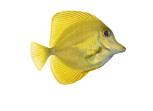


MI VOCABULARIO / SONIDOS Y LETRAS / MINIPROYECTO

Références à des tutoriels de prononciation visuellement attrayants et à des auto-évaluations pour pratiquer le vocabulaire de la leçon.

Sonidos y Letras
Une brève explication suivie d'enregistrements à écouter et répéter avec des activités pratiques et des tutoriels vidéos.

Miniproyecto
Une activité compatible au monde réel que les étudiants doivent accomplir en utilisant les compétences linguistiques étudiées et acquises dans la leçon.







MI VOCABULARIO Reporteros Reporteros 1 MI VOCABULARIO 92 ı noventa y dos noventa y tres 93 el / la cantante singer el / la compositor/a composer la banda band el instrumento instrument tocar el piano to play the piano cantar una canción to sing a song tocar la guitarra to play the guitar tocar la bater a to play the drums la tortuga turtle la rana frog el pez fish el perro dog el pájaro bird el manat manatee el lagarto lizard bailar to dance comer chocolate to eat chocolate escuchar música to listen to music estudiar to study hacer deporte to exercise jugar al béisbol to play baseball leer cómics to read comic books sal r con amigos/as to go out with friends ver series to watch a series la cobaya guinea pig el conejo rabbit el gato cat el caballo horse SELF-CHECK QUIZ el jazz el reguetón la música clásica classical music el rock el pop la salsa el reggae el hip hop LOS ESTILOS MUSICALES LAS ACTIVIDADES LA MÚSICA LOS ANIMALES Y LAS MASCOTAS Reporteros abierto / abierta ≠ tímido / t mida sociable ≠ shy amable kind cariñoso / cariñosa ≠ distante loving ≠ distant creativo / creat va creative divert do / divertida ≠ aburr do / aburr da fun ≠ boring dependiente ≠ independiente dependent ≠ independent honesto / honesta honest inteligente smart lea loyal paciente ≠ impaciente patient ≠ impatient trabajador / trabajadora ≠ perezoso / perezosa hardworking ≠ lazy simpático / simpática nice tranqu lo / tranquila ≠ nervioso / nerviosa quiet ≠ nervous valiente brave 94 noventa y cuatro UN PERFIL EN UNA RED SOCIAL CONTEXT You need to create a profile for a social media platform. PRODUCT A social media profile about yourself 1. Fill in a chart with the following information about yourself. • Nombre, apellido, nacionalidad, residencia, cumpleaños • Personalidad, características • Aficiones, animales favoritos, número favorito, música favorita, personalidades favoritas 2. Write a paragraph introducing yourself. 3. Add extra information. 4. CONEXIÓN: ARTE Draw an avatar of yourself. Design your profile like a real social media profile. Download a template from RETO MINIPROYECTO 1 Record a “videoprofile” introducing yourself. ALTERNATIVA DIGITAL ¿Cómo soy? Seb_el_reportero Sebastián Me llamo Sebastián y soy de San Juan, Puerto Rico. Me gusta hacer deporte, bailar y salir con los amigos. 32 publicaciones Modificar perfil 30 seguidores 62 seguidos 8:30 ágil agile bonito ≠ feo/a pretty ≠ ugly grande ≠ pequeño/a big ≠ small rápido/a ≠ ento/a fast ≠ slow SELF-CHECK PRONUNCIATION � � � When a word has more than one syllable, one of the syllables is stressed or emphasized more than the others. We call it the stressed syllable The stressed syllable can be found: - on the final syllable: le-al - on the next-to-last syllable: po-si-ti-vo - on the third-to-last syllable: tí-mi-do Listen and repeat these words. a. simpática d. tranquilo b. tortuga e. música c. estudiar f. canción Listen to the following words. Find the stressed syllable in each word. a. sal-sa d. can-tan-te b. ins-tru-men-to e. sa-lir c. ma-na-tí f. tra-ba-ja-dor 27 28 STRESSED SYLLABLES LAS CARACTERÍSTICAS LA PERSONALIDAD
Unité en un coup d’œil
PROYECTO FINAL
Contexte et produit
Une description détaillée du contexte dans lequel la tâche doit être accomplie et une explication claire de ce à quoi le produit final doit ressembler. Instructions de l’activité
Des instructions étape par étape pour atteindre les objectifs de la tâche.
Proyecto final
Une activité compatible au monde réel que les étudiants peuvent réaliser en utilisant les structures grammaticales, le vocabulaire et les compétences en communication étudiés et acquis dans l'unité.

PREPARO LA EVALUACIÓN
Preparo la evaluación
Activités conçues pour préparer les étudiants à l'évaluation de cette unité.
Pepito es un cómic sobre la familia puertorriqueña y una variedad de temas como la política y los problemas sociales
y su artista favorito es Daddy Yankee.
Mamá es el pilar de la casa y papá usualmente es la víctima de los problemas del país. Tata es la abuela de Pepito y mamá de su mamá. Es una
Ressources authentiques
Les supports choisis pour les activités de communication interprétative sont authentiques et adaptés au niveau de lecture et d'écoute des étudiants






CONTEXT Your class is helping to produce a Spanish special edition of the school magazine. PRODUCT An article introducing an interesting person 114 ciento catorce PROYECTO FINAL CREAR UNA EDICIÓN ESPECIAL DE LA REVISTA ESCOLAR NOS INSPIRAMOS 1. Make a list of people that you find interesting in your school community. 2. Decide who (one person) you would like to interview. 3. Contact the person. DEFINIMOS LOS ELEMENTOS 4. Make a list of the questions you can ask him or her. Here are the topics you should include: • Información personal: nombre, nacionalidad, idiomas... • Personalidad • Gustos y preferencias: música, animales, aficiones… ENTREVISTAMOS 5. Use Spanish if the person speaks the language. Otherwise, use English. You can translate the answers later. 6. Take notes of the conversation or record it if the person approves. ESCRIBIMOS 7. Read or listen to your notes. 8. Write a profile of the person. Use the information that he or she gave you and add other information (ocupación relación con ustedes descripción física...). 9. Edit and correct the profile. FINALIZAMOS 10. Collect all the articles and create the special edition of the magazine. 11. Together, design a cover for the magazine. ciento quince 115 Reporteros 1 Reporteros CONEXIÓN: ARTE PROYECTO FINAL SELF AND PEER ASSESSMENT RUBRIC ASSESSMENT RUBRIC HOW TO WRITE AN ARTICLE ABOUT SOMEONE Start by writing a draft Write short, simple sentences Be sure to use the grammar structures and vocabulary you have learned so far Re-read your text and improve what you can. Write a clean copy of the text. If possible, put a large picture of the person in his / her work environment. Write a caption Don’t forget to sign the article Create a video version of the interviews. Add Spanish subtitles. ALTERNATIVA DIGITAL INTERPRETIVE VIEWING Watch the video. Answer the questions below. 1. ¿Quién no vive con Gabi: su papá o su mamá? 2. ¿Cuántos años tiene su hermano? 3. ¿Quién es muy deportista? 4. ¿A quién le gusta jugar a videojuegos? 5. ¿Quién es una persona trabajadora? 6. ¿Quiénes son personas artísticas? 7. ¿Quién tiene setenta años? 2 PREPARO LA EVALUACIÓN · IPA 116 ciento dieciséis ciento diecisiete 117 Reporteros 1 Reporteros GRAMÁTICA pp. 88-90 VOCABULARIO pp. 92-94, 110 GRAMÁTICA pp. 88-90, 108 VOCABULARIO pp. 92-94 GRAMÁTICA pp. 88-90, 108 VOCABULARIO pp. 92-94, 110-111 La familia Alejandro Yegros ESTRATEGIAS Focus on the task When you write a paragraph, focus on giving the information you are asked to give Write it one sentence at a time using what you have learned. ESTRATEGIAS Rehearse before speaking Practice before doing the presentation. The clearer your pronunciation is, the better the other person will understand you. PRESENTATIONAL PRESENTATIONAL WRITING You collaborate with a pop culture online magazine. This month's topic is about superheroes. Choose a superhero you like. Write about him or her, including the following information: • ¿Cómo se llama? • ¿Cómo es su personalidad? ¿Cómo es físicamente? • ¿Qué le gusta? PRESENTATIONAL SPEAKING Your school participates in a virtual exchange with a partner school in Puerto Rico. You exchange videos with the other students. This week, the topic is: la mascota ideal Record a video including the following information: • ¿Cuál es la mascota ideal para ti? • ¿Cómo es su personalidad? ¿Qué le gusta y qué no? 3 4 INTERPRETIVE INTERPRETIVE READING Read the text. Answer
the questions. PEPITO , UN CÓMIC PUERTORRIQUEÑO
personajes Pepito es un muchacho curioso de siete años. Vive con su mamá, su papá y su abuela. Tiene dos mascotas, Chupi y Thomas. Le gustan mucho los mantecados
de Puerto Rico. Los
mujer fuerte. Mofin es un amigo de Pepito. Le gustan mucho la tecnología y la piña2 Yelitza es una amiga de Pepito. Es una niña muy inteligente y su interés principal es el rol de las mujeres en la sociedad. 1 � RUBRIC En Puerto Rico bien = muy Es bien cariñosa Es muy cariñosa. TAMBIÉN SE DICE… 1. ¿Cuántos años tiene Pepito? 2. ¿Cuántas personas viven con Pepito? 3. ¿Quiénes son Chupi y Thomas? 4. ¿Qué estilo de música le gusta a Pepito? 5. ¿Cómo es su abuela? 6. ¿Qué le gusta a su amigo Mofin? 7. ¿Quién es Yelitza? ¿Cómo es? ESTRATEGIAS Review Review the question words on p. 43 and write them on a piece of paper that you can refer to when you need them. GRAMÁTICA pp. 88-90 VOCABULARIO pp. 92-94, 110 1 ice cream 2 pineapple Pepito Cómics, Harold Jessurun y Aníbal Quiñones

Communication de la vie réelle
Les activités de communication présentationnelle et interpersonnelle sont toujours des exemples de communication de la vie réelle.

APPENDICES
Expresiones útiles para conversar
Une collection de ressources communicatives : les phrases les plus fréquemment utilisées en classe ainsi que d'autres expressions couramment utilisées dans les situations du quotidien.
Nuestras Culturas
Une activité orale et écrite conçue pour aider les étudiants à faire une comparaison culturelle concernant l'un des sujets abordés dans l'unité.


Vocabulario
Mots de vocabulaire actif organisés par ordre alphabétique avec des références aux pages où ils apparaissent.
118 ciento dieciocho ciento diecinueve ı 119 Reporteros Reporteros 1 COMPARACIÓN CULTURAL B. Reply to her by addressing all her questions. INTERPERSONAL SPEAKING A. You are participating in a Spanish club. Today, the topic is families and pets. In pairs, interview each other, including the following information: How many people are there in your family? Who are they? Who is your favorite family member? What is your favorite pet? Why do you like it? B. Record the interview. 6 ESTRATEGIAS Use linking words Use linking words like y pero and porque to link your sentences. They will make your writing more freeflowing. ESTRATEGIAS Negotiate meaning If you don’t understand something, ask for clarification using: No entiendo… ¿Puedes repetir, por favor? or ¿Qué significa…? This is an important skill for interactive communication. Your teacher will assess that you used them properly. ESCRIBE Choose one of the following topics. Complete the chart below with information from this unit. Write three to four sentences to compare both cultures. 1. La música en Puerto Rico y la música en tu país. 2. El concepto de familia en Puerto Rico y en tu país. 3. El arte urbano en Puerto Rico y en tu país. HABLA Choose one of the following topics. Complete the chart below with information from this unit. Record an audio track or a video to compare both cultures. 1. Los deportes en Puerto Rico y en tu país. 2. Personajes de ficción de Puerto Rico y de tu país. 3. Los pueblos nativos de Puerto Rico y de tu país. 1 TOPIC: IN PUERTO RICO IN YOUR COUNTRY 2 TOPIC: IN PUERTO RICO IN YOUR COUNTRY ESTRATEGIAS Use resources to compare Write or say simple sentences about each culture. Use words such as y pero sí no también and tampoco and phrases such as es similar a and es diferente a to connect and compare them. � ASSESSMENT RUBRIC INTERPERSONAL INTERPERSONAL WRITING A. Read a message that an English teacher posted on a Puerto Rican online forum. 5 GRAMÁTICA pp. 88-90, 108 VOCABULARIO pp. 92-93 GRAMÁTICA pp. 88-90, 108 VOCABULARIO pp. 93-94, 110 ¿Qué hacen los estadounidenses en su tiempo libre? Hola a todos. Soy profesora de inglés en Puerto Rico y mis estudiantes tienen una unidad sobre los Estados Unidos. Hablamos de actividades que las personas hacen en su tiempo libre y comparamos qué hacen los jóvenes de Puerto Rico y de EE. UU. ¡Necesitamos información! ¿Qué les gusta hacer en su tiempo libre? ¿Qué música les gusta? ¿Qué artistas son populares en su país? NUESTRAS CULTURAS � MY PROGRESS � ASSESSMENT RUBRIC GREETINGS ¡Hola! Hello! ¿Qué tal? How are you? ¿Cómo estás tú? ¿Cómo está usted? How are you? Bien, gracias. I’m fine, thanks. Buenos días. Good morning. Buenas tardes. Good afternoon. Buenas noches. Good night. SAYING GOODBYE ¡Adiós! Good bye! Hasta luego. See you later. Hasta pronto. See you soon. Hasta mañana / el lunes / martes… See you tomorrow / on Monday / Tuesday… INTERACTING IN THE CLASSROOM Tengo una pregunta: … have a question: … ¿Cómo se dice… en español? How do you say… in Spanish? ¿Qué significa…? What does… mean? ¿Cómo se escribe / deletrea...? How do you write / spell...? ¿Puede(s) repetir, por favor? Can you repeat that, please? ¿Puedo ir al baño? May I go to the bathroom? THANKING (Muchas) gracias. Thank you (very much). De nada. You are welcome. Por favor. Please. APOLOGIZING Lo siento (mucho). I’m (very) sorry. Perdón. Sorry. GIVING AN OPINION Pienso que… think that... Creo que… think that... En mi opinión… In my opinion... Mi opinión es que… My opinion is that... ASKING AND GIVING PERSONAL INFORMATION ¿Cómo te llamas? What is your name? Me llamo David. My name is David. Mi nombre es Candace. My name is Candace. ¿De dónde eres? Where are you from? • Soy de los Estados Unidos. am from the United States. Soy estadounidense. am American. ¿Dónde vives? Where do you live? Vivo en Dallas. live in Dallas. ¿Cuántos años tienes? How old are you? • Tengo quince años am fifteen years old. • ¿Cuál es tu ocupación? What is your occupation? Soy estudiante. am a student. ¿Qué idiomas hablas / aprendes? What languages do you speak / are you learning? Hablo inglés y español. speak English and Spanish Aprendo español. learn Spanish. • ¿Cuál es tu correo electrónico? What is your email (address)? Mi correo electrónico es… My email (address) is… ¿Cuál es tu número de teléfono? What is your telephone number? Mi número de teléfono es… My telephone number is… ¿Cuándo es tu cumpleaños? When is your birthday? Mi cumpleaños es el… My birthday is on… EXPRESSING CAUSE • ¿Por qué estudias español? Why do you study Spanish? • Estudio español porque quiero viajar a un país hispanohablante. study Spanish because want to travel to a Spanish-speaking country. DESCRIBING PHYSICAL APPEARANCE ¿Cómo eres? What do you look like? Soy alto/a. am tall. Soy bajo/a. am short. Llevo barba / bigote / lentes. have a beard a moustache / wear glasses. Tengo el pelo rubio / negro / castaño. have blond(e) black / brown hair. Tengo el pelo largo / corto. have long / short hair. Tengo el pelo liso / rizado. have straight / curly hair. Tengo los ojos azules / marrones / negros / verdes. have blue / brown / black / green eyes. DESCRIBING PERSONALITY ¿Cómo eres? What are you like? Soy tímido/a. I’m shy. Soy un poco tímido/a. I’m a bit shy. Soy muy tímido/a. I’m very shy. TALKING ABOUT LOCATION • ¿Dónde está mi celular? Where is my cell phone? Está encima de la mesa. It’s on the table. EXPRESSING OBLIGATION ¿Qué quehaceres tienes que hacer en casa? What household chores do you have to do at home? • Tengo que ordenar la habitación todos los días. have to clean up my bedroom every day. DESCRIBING A SPACE Es grande ≠ pequeño. It is big ≠ small. luminoso/a ≠ oscuro/a. It is bright ≠ dark. nuevo/a ≠ viejo/a. It is new ≠ old. moderno/a ≠ tradicional. It is modern ≠ traditional. EXPRESSING LIKES AND DISLIKES ¿Qué te gusta? What do you like? (No) Me gusta la música latina. (don’t) like Latin music. (No) Me gustan las canciones de Karol G. (don’t) like Karol G’s songs. (No) Me gusta escuchar música latina. (don’t) like to listen to Latin music. EXPRESSING AGREEMENT Estoy de acuerdo. agree. A mí también (me gusta la música latina). like Latin music, too. A mí tampoco (me gusta la música latina). don’t like Latin music, either. EXPRESSING DISAGREEMENT No estoy de acuerdo. don’t agree. A mí sí me gusta (la música latina). (do) like Latin music. A mí no me gusta (la música latina). don’t like Latin music. EXPRESIONES ÚTILES PARA CONVERSAR ¡EMPEZAMOS! 1 Soy de los Estados Unidos 2 Amigos y familiares 3 Hogar, dulce hogar Reporteros 1 Reporteros 1 312 trescientos doce trescientos trece 313 VOCABULARIO ESPAÑOL – INGLÉS A abierto / abierta sociable 2 (el) abrigo coat 6 (la) abuela grandmother 2 (el) abuelo grandfather 2 (los) abuelos grandparents 2 aburrido / aburrida boring 2 (el) accesorio accessory 6 (el) aceite oil 6 acostarse (ue) to go to bed 5 (la) actividad extraescolar extracurricular activity 5 (el) actor / (la) actriz actor, actress 1 ágil agile 2 (el) agua water 6 (el) agua con gas sparkling water 6 (el) agua sin gas still water 6 (el) aguacate avocado 6 (el) aimara Aymara (language) 1 (el) ajedrez chess 5 al lado de next to 3 (el) alemán German (language) 1 alemán / alemana German 1 ser alérgico a to be allergic to 6 almorzar (ue) to have lunch 4 (el) almuerzo lunch 4 alto / alta tall 2 amable kind 2 amar to love 5 amarillo / amarilla yellow 3 anaranjado / anaranjada orange 3 antes de before 5 apagar to turn off 5 (el) apartamento apartment 3 (el) aperitivo appetizer 6 aprender to learn 1 aprobar (ue) to pass 4 (el) árabe Arabic (language) 1 (los) aretes earrings 4 argentino / argentina Argentinian 1 (el) armario closet 3 (el) arroz rice 6 (la) asignatura subject 4 (el / la) astronauta astronaut 1 (el) atún tuna 6 (el) auditorio auditorium 4 australiano / australiana Australian 1 (el) automovilismo car racing 5 ayudar a alguien to help someone 3 (el) azúcar sugar 6 azul blue 3 (el) azulejo tile 3 B bailar to dance 2 bajo / baja short (height) 2 (el) balcón balcony 3 (el) baloncesto basketball 5 (la) banana banana 6 (la) banda band 2 (el) baño bathroom 3 (la) barba beard 2 barato / barata cheap 6 (el) barrio neighborhood 1 (el) barro clay 3 (la) batería drums 2 beber to drink 6 (las) bebidas drinks 6 (el) béisbol baseball 2 (la) biblioteca library, media center 4 (el) bigote moustache 2 blanco / blanca white 3 (la) blusa blouse 5 (la) boca mouth 2 (el) bocadillo sandwich 5 (el) bolígrafo pen E boliviano / boliviana Bolivian 1 (el) bolso handbag 6 bonito / bonita pretty, beautiful 2 (el) boxeo boxing 5 brasileño / brasileña Brazilian 1 británico / británica British 1 bueno / buena good 2 buscar to look for 6 C (el) caballo horse 2 (la) cabeza head 2 (el) cactus cactus 3 (el) café coffee 5 brown 3 (la) cafetería cafeteria 4 (la) cama bed 3 (la) cámara de fotos camera 5 (la) camisa shirt 4 (la) camiseta t-shirt 4 (la) campaña electoral election campaign 4 canadiense Canadian 1 (la) cancha de deporte field 4 (el) candidato / (la) candidata candidate 4 cansado / cansada tired 4 Vocabulario INSTRUCCIONES DE CLASE EN ESPAÑOL Describe Describe Di tu opinión Give your opinion Di Say Explica Explain Habla Speak Justifica Justify Presenta Present Vota Vote Comparte Share Hagan un debate Debate Interactúa Interact Intercambia Exchange Interpreta Interpret Pregunta Ask Responde Answer Escucha Listen Fíjate Pay attention Mira Look at Observa Observe Comprueba Check Corrige Correct Lee Read Resume Sum up Busca Look for Descarga Download Encuentra Find Graba Record Imprime Print out Investiga Research Sube Upload Usa Use Adivina Guess Haz hipótesis Make hypotheses Deduce Deduce Crea Create Da un ejemplo Give an example Dibuja Draw Diseña Design Indica Point out Inventa Invent Imagina Imagine Memoriza Memorize Piensa en Think about Prepara Prepare Recuerda Remember Sitúa Locate Añade Add Completa Complete Copia Copy Clasifica Classify Conjuga Conjugate Describe Describe Elige Choose Escribe Write Explica Explain Haz una lista Make a list Identifica Identify Incluye Include Mira Look at Ordena Put in order Relaciona Match Selecciona Select Toma notas Take notes Traduce Translate INTRODUCTION This vocabulary contains all the active vocabulary from Reporteros 1 The locator numbers indicate the chapter in which the word was introduced first. E refers to ¡Empezamos! Reporteros 1 Reporteros 1 316 trescientos dieciséis trescientos diecisiete ı 317
Voulez-vous en savoir plus sur notre catalogue complet?
Veuillez numériser le code!

Instagram: klettwlcanada
Twitter: klettwlca
Facebook: kwlcanada
www.klettwl.ca
LinkedIn: klettwlca
Spotify: Klett World Languages
YouTube: KlettWorldLanguagesCanada

































































































